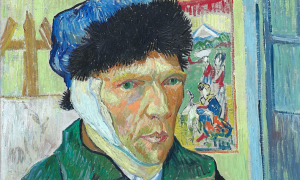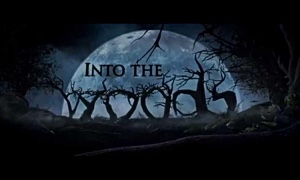Home » Jazz Articles » Shrinktunes » The Definitive Monk Bio: So, Was He Crazy, or What?
The Definitive Monk Bio: So, Was He Crazy, or What?
 Thelonious Monk: The Life and Times of an American Original, by Robin D. G. Kelley, was published in the fall of 2009.
Thelonious Monk: The Life and Times of an American Original, by Robin D. G. Kelley, was published in the fall of 2009. It arrived surrounded by buzz that, since the author had unprecedented access to the Monk family, he could finally answer those lingering questions about his "mental illness"—as in, was Thelonious schizophrenic, bipolar, obsessive-compulsive, or something else?
The book is dense, with 588 pages of meticulous detail. After a few chapters I decided to scan the index for mentions of bipolar disorder, and judge the relevant evidence for myself. (In the process, I was delighted to discover citations to some of my own work, on page 507).
I'm happy to report that Kelley spends most of his time on Monk's accomplishments and loving relationships; as a result, much of what follows in this column is only from Chapter 17, "People Have Tried To Put Me Off as Being Crazy" (pp. 214-224).
Although Kelley shows great discernment in citing my writings [!], he also demonstrates limited understanding of what bipolar disorder truly is (or has been agreed to be, since there are many professionals who question its existence as a discrete medical entity). Kelley also makes several glaring errors. For instance, on page 215 he writes that "cyclothymia" [is] a "depressed state," when it is not; the word "dysthymia" is closer to what he means, but both terms refer not to a state but a kind of "trait"—i.e., an ongoing tendency for someone's mood to be mildly depressed (dysthymic) or cycle between ups and downs (cyclothymic). Similarly, "hypomania" is not a manic state—it too is milder, "beneath" mania, as its prefix would indicate—and again, this is neither alarming nor unusual.
Unfortunately, Kelley perpetuates a more destructive stereotype when he says that "common traits of manic behavior include... violent actions," when the truth is that mental patients, as a group, are actually less violent than the general population. He also lumps in "a marked tendency to seek out other people" as if this were another "symptom" of mania (p. 215); if that's so, lots of us social types are in trouble.
The fact is that, like many laypeople (as well as far too many professionals), Kelley confuses a serious condition with an eccentric personality. Before psychiatry made everything a [reimbur$able] flaw, "cyclothymic" people were simply considered "moody"; they didn't suffer from any inherent mental disorder. When people experienced negative life events, they were able to panic, rant, rail at the gods, weep, and even act bizarrely for a bit without incurring a dark diagnosis that subsequently followed them to the grave (and beyond).
According to Kelley, Monk's first hospitalization in 1957 was precipitated by a car accident that followed a year full of unusual stressors. But somehow Monk emerged three weeks later without any diagnosis at all: "no one knew what was wrong with Monk, not even the highly trained staff at Bellevue" (p. 214). Given the ease with which inpatients became "paranoid schizophrenics" back then, it's remarkable that the staff didn't document any psychiatric disorder in Monk.
Kelley says it took about 20 years before Monk was "correctly" diagnosed as bipolar, since once he started taking lithium, the favored treatment at the time, he seemed to improve; by then, he was also at the age when such episodes tend to trickle off. Armed with this diagnosis, Kelley retroactively frames many of Monk's behaviors as "symptoms" although they could also have been triggered by exhaustion, drinking, severe financial problems, and drugs. Some depressions followed the deaths of his beloved mother and nephew ("he got nutty," diagnosed his son [p. 344]), and being beaten by the police in Delaware.
Moreover, for years Monk took "vitamin shots" which were laced with Benzedrine (speed) (pp. 267, 318). This could agitate anyone, causing addiction and other life disruptions, and the doctor who peddled them eventually had his license suspended. But even when Monk refused to play or leave his room, his mind reportedly remained as sharp and witty as ever (p. 444). This is not psychosis: this is choice. His recurring ability to bounce back from bad behavior to disciplined, brilliant music-making (sometimes the next day) is a testament to his strength, not his craziness. And while Kelley mentions Monk's father's long hospitalization as evidence of some genetic predisposition to mental illness, he also points out that black men were often involuntarily committed in those days to be exploited as laborers (p. 216).
Finally, Kelley borrows the popular technique of pointing to any great enthusiasm or intense inspiration as "proof" of bipolar disorder. When Monk's beloved wife Nellie is in the hospital, and he's up for two nights, racing to finish her song, Kelley explains that "He was driven to mania" (p. 221). This reminds me of other writers' claims that the poet Lord Byron (so often The Poster Boy for bipolar disorder) was actually "manic" when exuberant in new love, or when he rejoiced in finishing a difficult swim, despite his club foot.
Think, folks: is it really "proof" of pathology when someone who has an angry, public, drunken outburst becomes withdrawn and depressed afterward? How about humiliation and shame as logical reasons to hide? [Perhaps the next psychiatric manual, due in 2012 and now being prepared with unprecedented secrecy, will include shame and humiliation as mental disorders. This is not as far-fetched as you might think.]
Similarly, while periods of intense creative energy, followed by long rests, are common in the life of many geniuses, whether this constitutes "mental illness" or not depends on your viewpoint and agenda.
So, does Kelley's exhaustively-researched tome settle this issue at last? Although I didn't read every word, I believe the answer actually appeared in 1958, and was provided by Monk himself: he told Downbeat Magazine that "sometimes it's to your advantage for people to think you're crazy" (p. xvii).
Yeah, Monk was crazy, all right: crazy like a fox.
But as always, since society fully expects its geniuses to pay dearly for their gifts, chances are that most readers of this book will find their suspicions of "mental illness" confirmed.
< Previous
Take Five With Jon O'Bergh
Next >
Ukiah's Lullaby
Comments
Tags
For the Love of Jazz
 All About Jazz has been a pillar of jazz since 1995, championing it as an art form and, more importantly, supporting the musicians who create it. Our enduring commitment has made "AAJ" one of the most culturally important websites of its kind, read by hundreds of thousands of fans, musicians and industry figures every month.
All About Jazz has been a pillar of jazz since 1995, championing it as an art form and, more importantly, supporting the musicians who create it. Our enduring commitment has made "AAJ" one of the most culturally important websites of its kind, read by hundreds of thousands of fans, musicians and industry figures every month.























